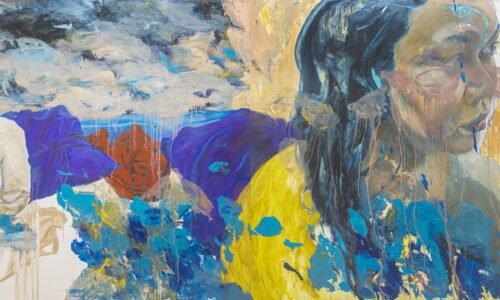proDUCT
Start
01 March 2025End
05 April 2025Artists
Dengcoy Miel, Isobel Francisco, Jose Tence Ruiz
One might assume that even a sliver of unanimity could emerge from the artistic approaches of three distinct minds—Isobel Francisco, DengCoy Miel, and Jose Tence Ruiz—when prompted to respond to an exhibition centered on the theme of “proDUCT.” Yet, such an assumption would be misguided. For while the concept of “proDUCT” appears broad and seemingly universal, it, as the term itself implies, generates as many interpretations as there are voices engaging with it.
Isobel Francisco, known for infusing her figuration with unfiltered emotion and fractured, textured portraits, takes a bold stance: The Maker, the Artist, is not merely the producer; the Artist is, simultaneously and ultimately, the Product. She foregrounds this assertion within a milieu where hype, self-promotion, Instagram, Viber, Facebook posts, social media, and WhatsApp have rendered the act of self-marketing as abundant as the summer harvests of a Mediterranean farmer’s market. In this landscape, we do not merely create—we are created. Stripped bare, scrutinized, commodified, and made vulnerable, the artist becomes the very product through which the work finds its place in the social construct, where art is not only transactional but deeply existential.
DengCoy Miel elevates the prompt to a loftier plane—immanence—not necessarily in the cultish sense of “God is made in you” but rather as a speculative self-realization imbued with transcendent reflexivity. His body of work exists as a sensuous membrane encasing a spiritual essence. Anatomies—be they Masculo-Malakas, Femino-Maganda, or any fluid variance in between—become ephemeral, like vapors of connection, synapses of pain and resilience. Here, human forms are subject to scarring, dissection, and violation by avian metaphors: the Promethean Eagle gnawing at our tender livers, scavenger ravens pecking brusquely at our skin, each act sparking unseen fires of agony that smolder into insight. Miel recalls the French idiom “nombril du monde” (navel of the world) and provocatively asks: Have we truly earned this centrality, this anthropocentric privilege? Or are we merely particles adrift among the winds, mingling with other gases that shape our fragile atmosphere?
In contrast, Jose Tence Ruiz approaches the theme with a journalistic lens, merging cultural archetypes with the grim certainty of weather charts and the haunting echoes of art historical reference. His works, often grotesquely theatrical, evoke the dystopian surrealism of Everett Millais but with a repulsion more visceral, more urgent. His tangled swastikas ensnared in baroque undergrowth forewarned of fascism’s insidious resurgence. His tableau of TikTok-age voyeurism depicts the reckless pillaging of natural resources by a well-suited class of golden men, entitled and insatiable. Unlike introspective musings, Ruiz’s narratives convulse, retch, and lament. His parables expose the grotesque consequences of excess, where products of unchecked ambition become instruments of their own corruption. In a world governed by subjectivities, he offers his devalued ten-centavos’ worth, guided by an inner compass that is perhaps as unmoored as any other—but trust, after all, is nothing if not the product of consistency.
What we have, then, is an exhibition that functions as a sharp-witted retort to the very notion of “proDUCT.” Yet, through their distinct practices, these three artists have shaped something that is both a prototype and a testament—a chimera born of discourse, defiance, and the diversity of thought increasingly under siege today.










